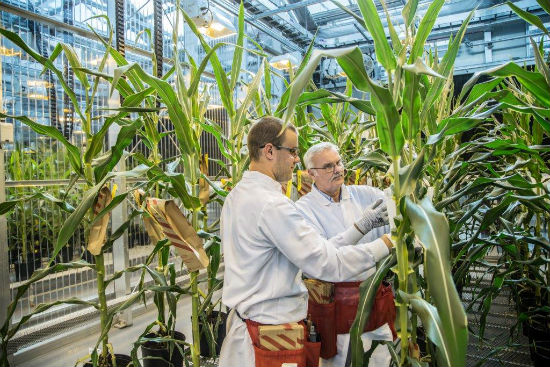
Research Triangle Area Among Three Finalists For USDA Moves Affecting 700 Jobs

The Research Triangle area is one of three finalists being considered for the new homes of the U.S. Department of Agriculture’s (USDA) Economic Research Service (ERS) and National Institute of Food and Agriculture (NIFA), moves that will involve nearly 700 jobs.
The Agriculture Sector Development team at the North Carolina Biotechnology Center contributed key attributes of the state’s ag tech ecosystem as part of the proposal submitted by economic development officials.
“North Carolina’s diverse agricultural economy, vibrant ag tech community, availability of a well-educated workforce, and quality of life make North Carolina and RTP a preferred location,” said Scott Johnson, NCBiotech vice president of agriculture sector development.
The other finalists for the relocation are Indiana, where multiple locations are being considered, and Kansas City, Missouri.
Informing decision-making
The Federal News Network reports that ERS has about 330 social scientists and support staff and an annual budget of about $85 million. The ERS anticipates trends and emerging issues in agriculture, food, the environment, and rural America and conducts high-quality, objective economic research to inform and enhance public and private decision making.
According to its website, the ERS shapes its research program and products to serve those who routinely make or influence public policy and program decisions. Key clientele include White House and USDA policy officials; the U.S. Congress; program administrators/managers; other federal agencies; state and local government officials; and organizations, including farm and industry groups.
NIFA has approximately 350 employees and an annual budget of more than $1.5 billion.
Created by the Food, Conservation, and Energy Act of 2008 (the 2008 Farm Bill), NIFA invests in and advances agricultural research, education, and extension to help solve national challenges in agriculture, food, the environment, and communities.
Working with scientists and researchers around the country, NIFA contributes to science policy decision-making, often in collaboration with other federal agencies. NIFA employs the peer review process for competitive grant programs, where panels comprised of scientists and other subject-matter experts review proposals.
The site selection process
The USDA said it received 136 expressions of interest from 35 states prior to selecting the three finalists.
As part of the rigorous site selection process, USDA narrowed the Expressions of Interest list using a set of established criteria defined by USDA, NIFA, and ERS leadership. The criteria included:
- Quality of Life: Subcategory examples include Diversity Index, Residential Housing Costs, Access to Healthcare, and Home and Community Safety Ranking.
- Costs (Capital and Operating): Subcategory examples include Commercial Real Estate Costs, CPI Index, and Wage Costs.
- Workforce: Subcategory examples include Labor Force Growth Rate, Unemployment Rate, and the Labor Force Population.
- Logistics / IT Infrastructure: Subcategory examples include Lodging Availability, Proximity to Customers, and Airport Accessibility.
The top Expressions of Interest were reviewed in detail, and USDA selected a short list of locations offering existing buildings with sufficient space to meet ERS and NIFA requirements.
Announcing the finalists, USDA Secretary Sonny Purdue said, “This short list of locations took into consideration critical factors required to uphold the important missions of ERS and NIFA. We also considered factors important to our employees, such as quality of life.”
He added, “Relocation will help ensure USDA is the most effective, most efficient, and most customer-focused agency in the federal government, allowing us to be closer to our stakeholders and move our resources closer to our customers.”
The USDA announced its plans to make the moves in August 2018.
Most employees now based in Washington, D.C. will be moved, the agency said. The process is intended to be complete by the end of 2019.
In the August announcement, the agency said, “Every employee who wants to continue working will have an opportunity to do so, although that will mean moving to a new location for most. Employees will be offered relocation assistance and will receive the same base pay as before, and the locality pay for the new location.
In August, the USDA noted three reasons for the moves:
- To improve USDA’s ability to attract and retain highly qualified staff with training and interests in agriculture, many of whom come from land-grant universities. USDA has experienced significant turnover in these positions, and it has been difficult to recruit employees to the Washington, D.C. area, particularly given the high cost of living and long commutes.
- To place these important USDA resources closer to many of stakeholders, most of whom live and work far from the Washington, D.C. area.
- To benefit the American taxpayers. There will be significant savings on employment costs and rent, which will allow more employees to be retained in the long run, even in the face of tightening budgets.
